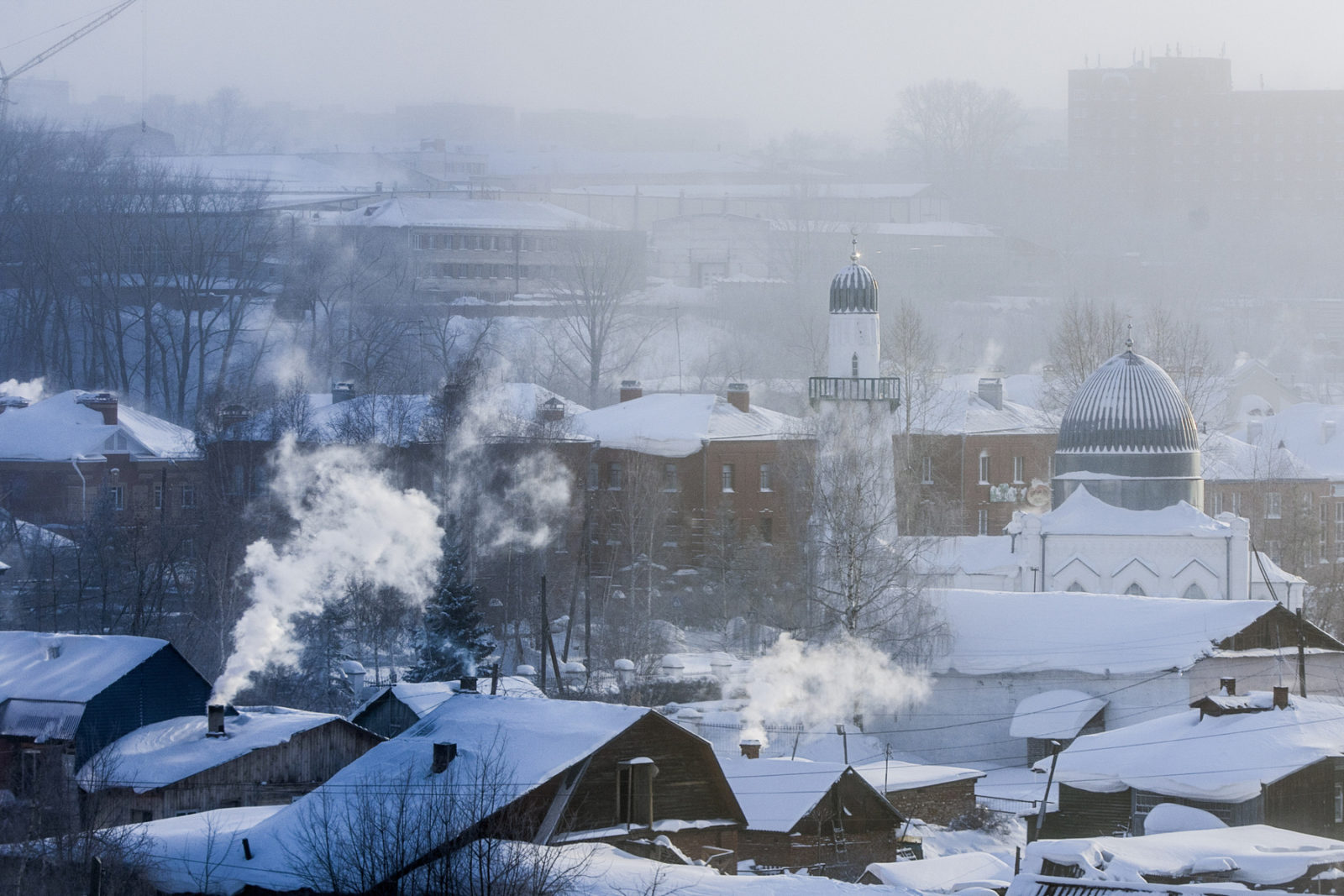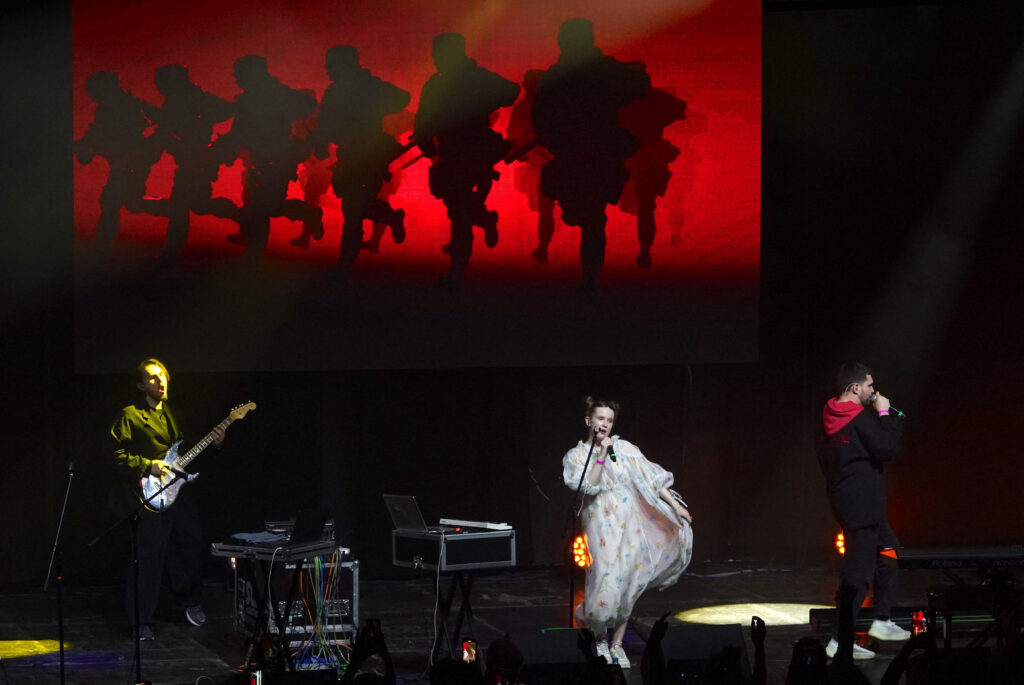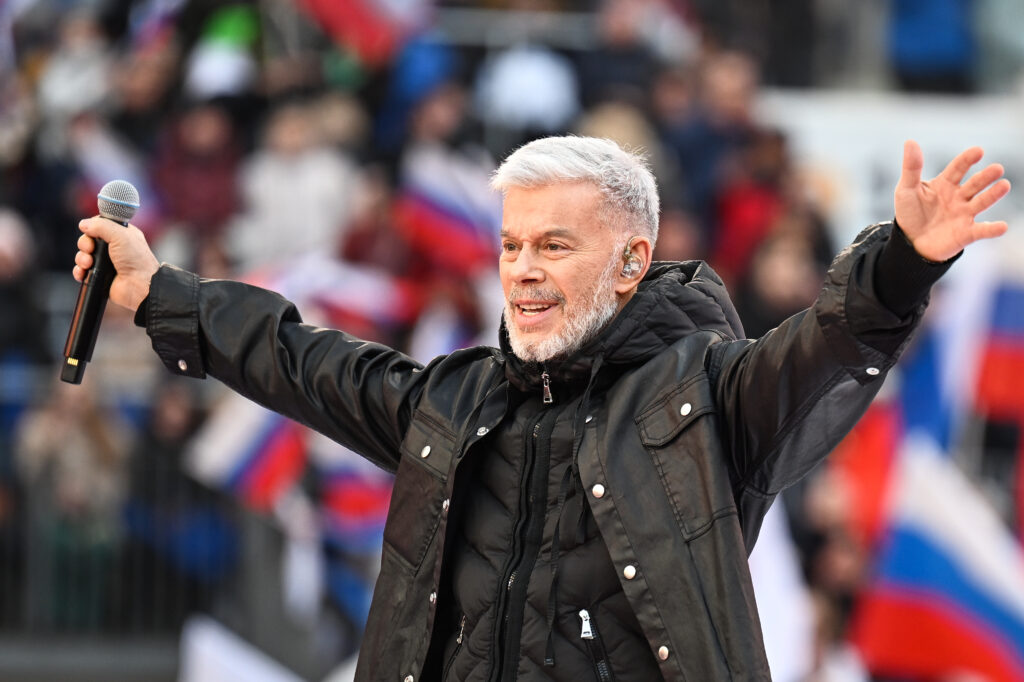In the post-Soviet period, Siberia experienced significant demographic changes. Most of this has been through migration. In the Far East, immigration declined on a large scale and continues to do so. But in the oil and gas regions of Western Siberia (the Tyumen region, including the Khanty-Mansiysk and Yamalo-Nenets Autonomous Districts) it has been very different. The regions here have instead seen the number of newcomers grow, tempted by the lure of jobs and security.
Yet the presence of Siberian Muslims is in itself anything but a novelty. Before the founding of the Western Siberian city of Tomsk in 1604, the area was mostly populated by Tatars. And right up to the 1990s, Tatars made up a majority of the Muslim population in Tomsk. The demographic dominance of Tatars among the Muslim minorities living in Siberian and European cities in Russia is typical of the late imperial and Soviet periods. Yet in the 1990s and 2000s, Muslim spaces radically transformed. Migration flows from former Soviet republics in Central Asia and internally from North Caucasian republics intensified. The imams in the majority of mosques are stilll Tatar, and this group generally holds a position of dominance within the Muslim elite in Russia. However, it is mostly Central Asian nationals and North Caucasians now that attend services.
In the 1990s, what was then a unique situation for Russia emerged in Tomsk. The imams of the two pre-revolutionary mosques are a Tajik national and a migrant from Kyrgyzstan. The situation in this Islamic community is even more curious considering the large local Tatar population.
How large exactly is this population? It is impossible to provide relevant and reliable modern ethnic statistics for Tomsk, or at least for Tomsk oblast. Tomsk itself is a relatively large city in the south of Western Siberia, with official statistics pointing to a total population of 575’000 in 2019. Breaking down those numbers further is harder. The last census is from 2010 — far out of date considering the active demographic changes across Siberia since then. Moreover, these data do not account for undocumented migrants. They do not differentiate between labor migrants and foreign students. And they do not reflect the complexity of migration mobility. A migrant might, for example, immigrate to Tomsk — but then return home after a few months, and then go back to Russia but to another city, and then return to Tomsk again to work for a time. None of tha is taken in to account. Still, there are some estimates. Currently, the largest ethnic groups in Tomsk are Uzbeks (about 6’000, including students), Kyrgyz (about the same) and Tajiks (about 3’000, including students). Among the Caucasian peoples in the Tomsk region are Azerbaijanis (4’000, hereinafter data is from 2010), Chechens (547), Avars (315, most of whom come from rural areas of northern Azerbaijan, not Dagestan) and Ingush (224).
Beyond the vagaries of the numbers, the peculiarity of migration to Siberia – in small, rich cities; in villages of the oil-and-gas Arctic circle, as well as in the relatively populous city of Tomsk – is that it is self-regulating. In the post-war period, it was primarily students that migrated from Central Asia and the Caucasus to Tomsk. Some stayed in the city and now represent their national diasporas as elders. Some arrived in the Tomsk region for construction, forestry, and agricultural work. More often that not, this was seasonal work, so they returned home in the fall. Others served in the military in the Tomsk Region. Migration to Tomsk for seasonal work, education, and military service in the Soviet and early post-Soviet army laid the foundation for the later escalation in migration in the late 1990s and especially in the 2000s.
In contrast to Moscow, for example, Siberia, even in regions rich with oil and gas, is not an obvious destination for economic migrants. This is why family ties and acquaintances often act as the deciding impetus to immigrate to Tomsk. Migrant elites – heads of diasporas, directors of sawmills, construction companies, restaurants of national cuisine, imams of mosques – have a significant influence on migration processes. Former neighbors, relatives and acquaintances often turn to local elites to find work.
Some Tomsk migrants have previous experience in Moscow. Others alternate between Tomsk and Moscow – for example, one might work in construction in Tomsk in the summer, and when the construction season ends for the winter, he leaves for Moscow to work on repairs for private apartments. Almost every migrant I surveyed said they did not intend to migrate again and tried to get a job in their homeland instead. But many had negative professional experiences there, and had since returned to a migratory lifestyle.
Migration, my research showed me, is rarely if ever an individual project. The choice of region for labor migration is determined by the individual’s ties – family and friends. Their degree of success depends on their social capital; they are often motivated to leave home to be closer to missed relatives. Migrants leave, return, leave again or move within Russia. They function within the migratory system not as an individual, but as a link in a social network formed even before migration and which becomes complicated during migration. A migrant’s length of stay in one place or another in migration depends not so much on their salary as on their speed and ease in creating social capital – connections. And in Tomsk, a small and socially comfortable city, establishing connections comes fast and easy.
A cornerstone for buillding connections in the muslim community, new and old, is of course the mosque. According to Marlene Laruelle and Sophie Omann, there are 59 officially registered mosques and prayer houses in the Russian Arctic, 35 of which are located in the Yamal-Nenets and Khanty-Mansi Autonomous Okrugs. In Tomsk, people attend services at both of the main mosques; active worshippers maintain relations with both imams. However, there are people who prefer one mosque to the other. Some Kyrgyz and Tajiks explain their choice by the nationality of the imam. For other groups of Muslims, their choice of mosque is about past ties. For example, almost the whole Avar community attends the White Mosque (these mosques are referred to by the buildings’ colors), where the imam is Kyrgyz. Avars from Dagestan and North Azerbaijan began to attend the White Mosque back in the 1990s, when the Red Mosque was in ruin and prayers took places in the neighboring madrasa building.
North Caucasian religious communities have the most robust links. Such is the case in any other Russian city, which is why Chechens and Ingush in Tomsk have a separate Sufi community of Zikrists of the Qadiri tariqa wird. They gather in a house built specifically for holding zikr at the outskirts of the city. Zikr-e-jahri is the remembrance and glorification of Allah through the utterance of certain phrases or his name. Meanwhile, Avars from Azerbaijan and Dagestan have their own prayer room (hujra) on the second floor of a furniture workshop owned by one of their fellow countrymen. Both Caucasian groups have their own imams. However, both Avars and Vainakhs gather in one of the official city mosques for the Juma-Namaz (the communal Friday prayer).
Beyond the mosque
In no Russian city are Muslim communities restricted to mosques. Individual Muslims (and not institutions or imams who act on behalf of the muftis) have made new Muslim spaces. These are largely created for and used by relatively recent migrants from Central Asia and the Caucasus. Muslim infrastructure which is visible and open to all (e.g., halal grocery stores and cafes, retail outlets selling religious incense and clothing) are created alongside less visible infrastructure. One can only discover the latter by being incorporated into a particular local community. These include unofficial prayer rooms scattered throughout the city; Caucasian Sufi prayer houses; a utility room in a pharmacy where free medical consultations are regularly available for fellow believers; a prayer room in a dormitory for construction workers built for Uzbeks by a CEO of a construction company from Bukhara, and so on. Muslim spaces in the city do not just consist of physical locations. Things can be more itinerant. Praying outside of mosques is possible (although praying in mosques is preferable). But also, for example, the opportunity to turn to a knowledgeable fellow countryman for religious advice or to conduct dua (a prayer reading for oneself or another person) or nikah (the marriage ceremony).
The diversification of urban Muslim spaces is largely the result of religious leaders with a migration background who transform the local Muslim landscape in various ways, or rebuild the Muslim microenvironment around themselves. The are considered the leaders of local micro-communities to some degree or another. And they win respect from local believers. Their religious authority is connected to their professional, financial, migratory, social, or medical credibility.
Common features of Muslim communities in large Siberian cities
I conducted fieldwork in another major Siberian city, Irkutsk (population 623’000) in August-September 2019. Each region has its specificities, but this recent field research has allowed me to see the processes and phenomena common to Muslim communities and migratory experiences in urban centers in Siberia more clearly. The mosaic-like traits of Muslim spaces in both Tomsk and Irkutsk is evident. Members of various ethnic and religious groups in the city gather in one mosque for the traditional Friday Muslim prayer. Some of these groups are consolidated and most often know each other personally. This applies primarily to Chechen and Ingush zikrists. And the same goes for immigrants from Dagestan and Avars from northern Azerbaijan. Consolidation and relative distance from the rest of urban Muslim life are characteristic features of the Caucasian Sufi jamaats outside Chechnya, Dagestan, and Ingushetia. The Vainakh and Avar communities have their own imams (in the case of Chechens and Ingush, the leaders of the local group of murids are called Turkkh and Tamada) and their own complex hierarchical relations. Despite the fact that murids faithfully attend an official mosque for Friday prayers, their daily religious practices center around their own Muslim leaders in various prayer halls in the periphery.
To discuss Tajiks in Siberian mosques, this group makes up the majority of parishioners, far larger than the numbers of practicing Kyrgyz and Uzbeks. Often, Tajiks (both immigrants from Tajikistan itself and Tajik-speaking immigrants from certain regions of Uzbekistan) assist imams during prayer, reading sermons in Arabic and performing prayers. Other Muslims turn to them for help – religious advice, to read the Qur’an if they feel unhappy, unwell or fixated on an obsession, or for a happy occasion, when the assistants meet in apartments or houses to read the Qur’an to celebrate childbirth, recovery from illness, or another joyous event. Kyrgyz nationals, as well as Pamiris, Uzbeks (although less frequently) and Shiite Azerbaijanis, also have their own religious leaders.
In Siberian cities, a complex balance has developed between official imams and ethnic religious authorities. The latter play a key role in the formation and maintenance of a heterogeneous Muslim community created over the past two or three decades through mass migration from the North Caucasus and from the former Soviet republics. In the years ahead, the balancing of power between established worshippers and newcomers keen to make their mark will lie at the heart of relations among Siberia’s Muslims.










